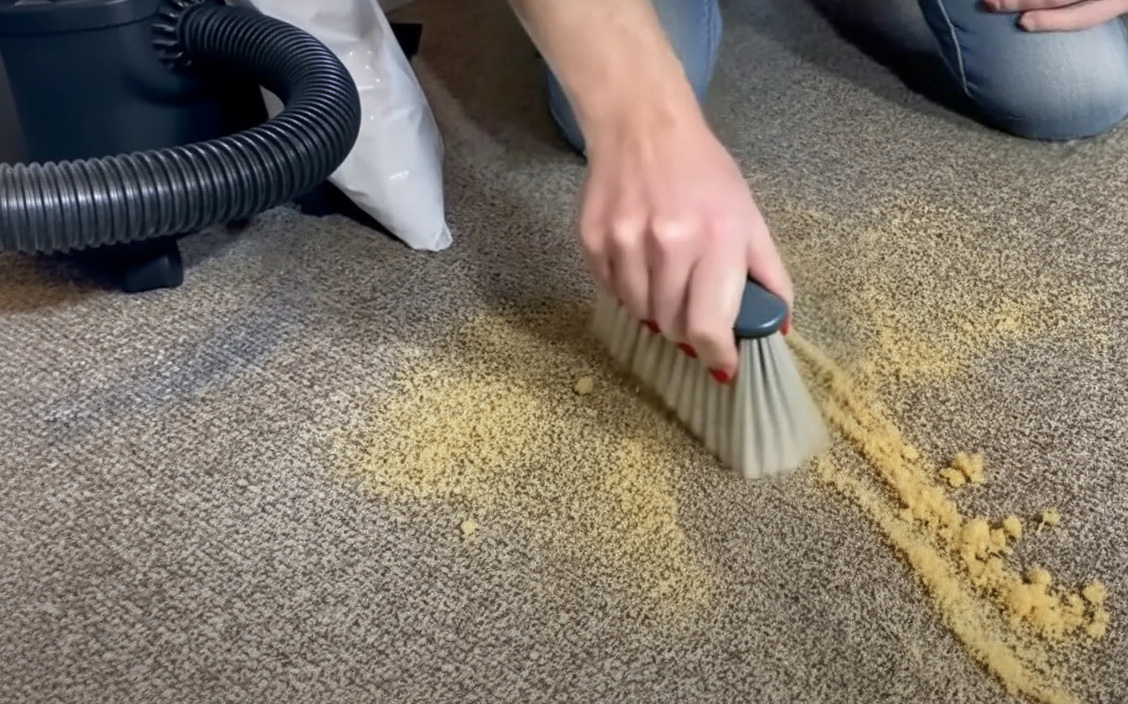Sisal carpets and rugs bring a warm, organic look to New Jersey homes. From Hoboken lofts to suburban family rooms. But as beautiful as sisal is, it’s also unforgiving when it meets everyday grit, tracked-in moisture, and DIY cleaning gone wrong. If your sisal is starting to look tired, frayed at the edges, or patchy in color, the issue often is not the fiber, it’s the maintenance plan. Here’s how a regular, professional dry carpet cleaning routine protects your investment and keeps sisal looking crisp for years.
The Hidden Threats Reducing Your Sisal’s Lifespan
Sisal is a plant-based fiber (from the agave plant). It’s strong underfoot, but highly absorbent and sensitive to water and alkalinity. Common, quiet culprits that wear sisal down include:
- Embedded dry soil (sand, grit, dust): These act like sandpaper, cutting fibers with every step.
- Moisture and spills: Even “clean” water can cause browning, rings, warping, and stiff, uneven texture.
- Winter salt & shore sand: New Jersey winters bring de-icer residue; summer trips add silica-rich sand—both accelerate abrasion.
- DIY spotters and steam: Over-wetting and harsh detergents can wick stains to the surface and break down latex backings.
- Humidity swings: Seasonal humidity can cause fibers to swell and curl at edges when moisture isn’t properly controlled.
- Left unchecked, these forces shorten the usable life of sisal, fade its natural color, and can permanently distort the weave.
Why Typical Cleaning Methods Make Sisal Worse
Traditional hot-water extraction and steam methods rely on moisture. Sisal doesn’t. When water penetrates a sisal weave:
- Browning and yellowing can appear as natural plant tannins migrate to the surface.
- Rippling, shrinkage, or edge curl may develop as fibers swell and then dry unevenly.
- Residue from soaps and DIY spotters attracts new soil, making traffic lanes re-soil faster.
Even careful blotting with too much liquid can leave tide marks that seem to “reappear” days later.
The Dry-Cleaning Difference (and Why It Works?)
Professional dry cleaning for sisal uses low-moisture techniques and a specialized dry compound to lift out soil, without the need for soaking. Here’s what a best-practice process looks like:
- Thorough dry soil removal: Commercial vacuuming and dusting to pull out grit that causes abrasion.
- Dry compound application: A cellulose or mineral-based cleaning compound (infused with safe detergents/solvents) is distributed across the weave.
- Agitation with a counter-rotating brush (CRB): This works the compound through the fibers, capturing soil without saturating the rug.
- Dwell and recovery: The compound absorbs embedded dirt; then it’s completely extracted, leaving the sisal cleaner, drier, and stable.
- Edge and detail care: Borders, bindings, and seams get special attention to maintain structure and prevent fray.
- Optional protector (plant‑fiber compatible): Helps repel dry soil and minor spills so the rug stays clean longer.
Result: No browning, no shrinkage, no warping—just refreshed texture and a longer-lasting weave.
How “Regular” Dry Cleaning Extends Service Life
Sisal fails early not because it isn’t durable, but because abrasive soil is allowed to build up and moisture is mismanaged. A proactive schedule prevents that:
- Reduces fiber abrasion: Removing grit before it saws at the fibers preserves strength and texture.
- Prevents moisture-related damage: Low-moisture methods avoid browning, seam stress, and latex breakdown.
- Stabilizes appearance: Routine maintenance keeps color even and edges flat, so your rug wears uniformly.
- Protects your investment: Replacement costs for sisal are far higher than routine care—especially for custom sizes or stair runners.
Suggested cadence (typical New Jersey households):
- High-traffic entryways & halls: Dry clean every 3–6 months
- Family rooms & dining areas: Every 6–9 months
- Bedrooms & low-traffic spaces: Every 9–12 months
If you host often, have indoor-outdoor living, or share your home with kids and pets, lean toward the more frequent end of each range.
Smart Between-Visit Care That Makes Cleanings Last
A few simple habits extend the time between professional visits and keep sisal looking sharp:
- Vacuum weekly (or more) with strong suction and the beater bar off to avoid fuzzing the weave.
- Use breathable rug pads (felt or natural rubber) to reduce wear and allow airflow, avoid trapping moisture.
- Rotate rugs quarterly so traffic lanes wear evenly.
- Trap grit at the door with quality walk-off mats (inside and outside).
- Spot spills immediately: Blot (don’t rub) using minimal moisture. Place a dry towel beneath the rug if possible to prevent wicking.
- Manage humidity with ventilation or dehumidification during sticky NJ summers to discourage edge curl.
What to Expect from a Sisal Dry-Cleaning Appointment
Choosing an experienced team matters. A professional sisal cleaning should include:
- Inspection for fiber type (sisal vs. jute or blends), backing condition, previous water marks, and pet accidents.
- Dry soil removal + controlled dry-compound cleaning suited to your specific weave and binding.
- Targeted treatment for edges, borders, and traffic lanes without over-wetting.
- Post-clean review with care tips and, if appropriate, protector application.
Turnaround is fast because the method is low-moisture; rooms and runners are typically ready for use shortly after the service is complete.
Extend the Life of Your Rugs with Expert Dry Cleaning
Sisal is stunning, but it rewards the right kind of care. Regular, professional host dry cleaning prevents the abrasion and moisture issues that most often cut a rug’s life short. With a smart maintenance schedule and good habits at home, you can keep that clean, tailored, natural look for the long haul.
Ready to give your sisal carpets and rugs the care they’re designed for? Book a professional dry cleaning with New Jersey Carpet Cleaner and protect your investment for years to come. Request your appointment today.

